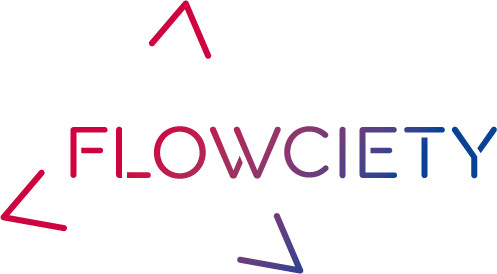Was ist eine Prozessstandardisierung?
As part of your digital transformation, there is one topic that you should not underestimate, as it is an important requirement for future transformation activities in your company. It is about process standardization.
Perhaps you know it: confusing data exchange via email with multiple partners, the DSGVO-compliant processing of shared information. Sensitive data that needs to be especially protected from unauthorized access and, at the same time, the simple (but sometimes unsecure) use of SaaS platforms, such as Microsoft Office 365. That’s why solutions like Glu:on are especially important for the successful digital transformation of your company, but let’s start from the beginning: What do we actually mean by process standardization?
In response to the question “What is standardization?”, the Gabler Wirtschaftslexikon defines it as “standardization according to certain patterns”. In terms of processes, this means that internal and shared processes follow a certain pattern so that they can take place seamlessly and quickly. Such standardization is the first step for efficient, sustainable processes and forms the basis for automation, which enables the advantageous implementation of new technological solutions. In an interview with Patrick Reiß (Vice President Global Spend Governance at DB Schenker) on the topic of digital transformation and process standardization, says the following about standardization:
Standardization always hurts at the beginning. But it is the key to automation, through which we achieve significant efficiencies.
Patrick Reiß, DB Schenker
The requirements
Process standardization is a major structural project and affects a wide variety of processes. To drive such standardization, you must define and analyze all recurring processes as a first step, and identify optimization needs in the process. In the example of a purchase order and an order confirmation, the same information is always needed. If you work with several suppliers and partners, orders can cover several pages, information is lost during feedback rounds, and incorrect information is overseen during verification. What becomes clear is how confusing and time-consuming such a process can be.
If standardization involves several departments in a company or external partners, it is important to define an IT standard or choose solutions that interact with different systems. This goes hand in hand with the decision to reduce the complexity and diversity of IT applications within the company. If this complexity is not simplified, at least in part, new media disruptions / interfaces can arise where data is lost and where additional organizational effort is created for all employees.
Patrick Reiß states:
As a matter of principle, we rely on integrated end-to-end solutions. We use "best-of-breed" solutions when we see real competitive advantages in them. It is important that these solutions are also integrated into our system landscape in order to increase automation potential and create data transparency.
Patrick Reiß, DB Schenker
The concerns
For all companies and also for process standardization, this means: Consider! Not every silo solution is fundamentally bad. Pay attention to integrity and identify potentials.
The concerns of employees that they will have to hand over their areas of responsibility to digitalization as a result of process standardization or automation of various processes are also justified. Take these concerns seriously and communicate your intentions clearly. Automation mostly affects processes that are similar to assembly line work. You surely remember Henry Ford, who had split the activities of his employees in such a way that production on the assembly line was possible. A process that was initially time-consuming and unstructured became a structured and efficient process, but this also brought disadvantages. Employees were unchallenged, and concentration was impaired by monotony. At the same time, dissatisfaction was promoted and the motivation of the employees was reduced. Nowadays, such activities are also called bullshit jobs – high manual effort, monotonous and error-prone. These processes do not require a human being to make important decisions through knowledge and experience and thus solve risky challenges.
Patrick Reiß from DB Schenker is aware of these concerns about digitization and says in an interview:
Colleagues are part of the digital transformation. Digitalization is for people, not the other way around. Nevertheless, we need to ensure that employees have the right skills to be able to use digital solutions efficiently.
Patrick Reiß, DB Schenker
Advantages you can notice through a process standardization
Yes,
- process standardization is a major change in the corporate structure,
- such a restructuring does not happen overnight,
- If you only deal with individual parts and not with a holistic structuring, disadvantages can also arise, such as additional work due to media disruptions.
But let’s move on to the advantages you can experience through process standardization. Once you have achieved it, you can expect competition-critical advantages with which you can remain resilient in the future and position yourself as a pioneer in your industry:
- Streamlined processes without extra loops or even best practice processes.
- Consistent process language and understanding
- Reduced process costs and cycle times
- Increased process / data transparency
- Reduced coordination and organization effort
- Improved understanding of internal processes, shorter onboarding times for new employees
- Increased flexibility for tight resources
- Increased efficiency of the internal and external service network
The topic is interesting for you and you want to know more? Then you can reach the flowciety team for a free introductory meeting under the following button.





